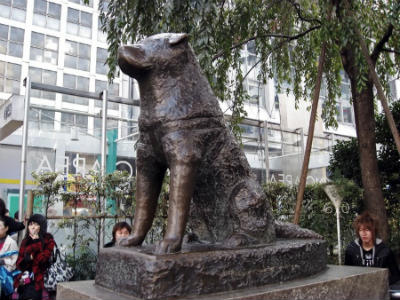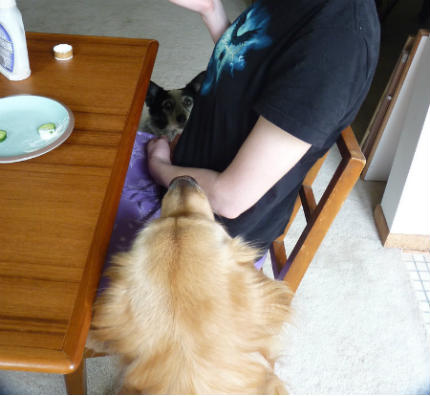As expressed in a popular saying recognized around the world:
The dog is man's best friend. This phrase can become a verifiable fact when you know the story of
Hachiko , the dog that became a world reference through a close relationship based on love and loyalty with its master, an agronomist. This story had such an impact that it was not only taken to the cinema to recreate the life of this noble animal, but also made Hachiko worthy of one of the most recognized statues located in Japan. If you have not yet had the opportunity to learn about this genuine story of camaraderie and empathy, now is the time. Next, we will detail the story of
Hachiko, a movie dog .
Who was Hachiko?
Hachiko is the name given to a small puppy born in 1924, in Odate, a city in northern Japan. Days after his birth, the dog was given to a professor at the Department of Agriculture at the University of Tokyo,
Hidesaburo Ueno , who, at the time, was going through the difficult physical loss of his previous pet, a dog.
For two days the dog traveled in a box from his birth home to Shibuya station, where Professor Ueno's servants went to pick him up, realizing that he had fainted, assuming that Hachiko would not survive. However, the professor brought him a bowl of milk and the dog immediately reacted. Given the loss he had recently suffered, Professor Ueno was not entirely convinced about staying with Hachiko. However, his daughter convinced him to do it. Decision that turned out to be very successful, as a
quick connection was established between the dog and its master .
Hachiko's name
The name of this genuine and faithful animal was no coincidence. It comes from the word “
hachi ” which, in Japan, means “eight”. Professor Ueno chooses to give him that name given the physical characteristics of the animal: Hachiko's front legs had a slight deviation.
A little about the Akita breed
The
Akita Inu breed , to which Hachiko belonged, came from Japan. This name is due to the fact that “Inu” is the translation of “dog” in Japanese and Akita, due to its relationship with the place of origin, the Akita prefecture. The evolution and physical traits of the breed allowed it to be considered a multitasking animal in Japan, being used for hunting or dog fighting, among others.
Hachiko has been the reflection of the behavior of dogs of his breed : loyal, protective and highly affectionate and expressive with their owners and the family to which they belong. A predominant curiosity about this breed is that
it is considered in Japan as a symbol of good luck . In Japanese custom, it is common to give a tiny Hachiko figurine as a way to bring good omens to another person.
Hachiko's life: what makes him so special?
Hachiko's moving story has earned him worldwide recognition for his high intelligence and loyalty. After Professor Ueno decided to adopt him, Hachiko became his best friend. Every day, the dog accompanied his master to Shibuya station in the morning hours, where he would see him off so that the latter could go to his work day. And then, as evening fell, Hachiko returned to the station to wait for the professor's arrival.
This day became an event that aroused the curiosity of passersby at the station, who regularly coincided with Hachiko and his master at the same time. However, one year later, exactly in May 1925, during one of his classes at the University of Tokyo, Professor Ueno fainted, apparently a victim of an intracranial hemorrhage, which caused his death. The afternoon of that same day,
Hachiko went as usual to the station , where he waited fruitlessly for his master without knowing that he would not return, remaining in the place all night and every consecutive day. To such an extent that the Shibuya station exit became her new “home” for the next nine years of Hachiko's life.
Those who knew Hachiko and the teacher's routine at the station were moved by the dog's loyalty and began to feed and water him. After 10 years of waiting, Hachiko was found dead at the station one March morning in 1935. The previous year, a bronze statue was erected in honor of his loyalty, which can be seen at Shibuya Station. The impact that Hachiko generated on society was such that
his death was published in the national newspapers , who from that moment gave him the name
Chüken Hachiko , a Japanese expression that means “
Faithful Hachiko Dog .” Another of the emblems in recognition of the dog and its fidelity was a statue located in the Aoyama cemetery, next to its master's grave, in which Hachiko and the professor are displayed.
Hachiko: movie dog
The sentimental shock that
Hachiko's story produced reached such a point that different film productions were made to tell it. The most notable and so far popular is “Hachiko, always by your side”, an American film directed in 2009 by Lasse Hallström and starring Richard Gere.
In this production, Richard Gere is a music teacher whose meeting with Hachiko takes place at a railway station, where the latter is wandering. Not far from the real story, Parker (Richard Gere) and Hachiko establish an indestructible friendship as time passes until the professor dies of cardiac arrest during one of his classes. The plot takes another course when Hachiko is recovered from the station by Parker's son-in-law and taken to live with his wife, although he escaped daily to wait for his master at the station.

















